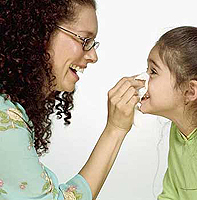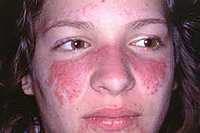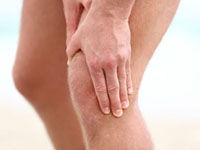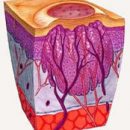What is Shegren Syndrome? How is the treatment of SHEGREEN syndrome? Answers to these questions you will find in the article.
Content
What is Shegren Syndrome
SHEGREEN Disease - a systemic autoimmune disease related to diffuse connective tissue diseases; characterized by the defeat of many secreting glands, mainly salivary and tear. SHEGREEN Syndrome (lesions of the tear glands with the development of dry keratoconjunctivitis and salivary glands in the type of parotitis), accompanying rheumatoid arthritis, diffuse diseases of the connective tissue, hepatobiliary diseases and other autoimmune diseases.
The constant feature of the lesion of the tear glands in Shegran is to reduce the secretion of the tear fluid. Patients complain about burning sensations, «scratch» and «sand» In eyes. Often marked the seeding of the eyelids, redness, accumulation in the corners of a viscous white separated.
Later, light-friendly appear, the narrowing of the eye cracks, is reduced by visual acuity.
The second mandatory and constant feature is the defeat of the salivary glands.
It is characterized by an increase in the salivary glands. Often before the appearance of these signs there are dryness of the red border of the lips, snags, stomatitis, an increase in regional lymph nodes, multiple caries of teeth.
In the initial stage of the disease, dryness in the mouth appears only during exercise and excitement. In the pronounced stage, dryness in the mouth becomes constant, accompanied by the need to drink dry food, desire to moisturize the mouth during a conversation. Free saliva little, she is a foam or viscous. Sukhoi language. Lips are covered with crusts
The dryness of the nasopharynx with the formation of dry crusts in the nose, in the lumen of hearing pipes can lead to temporary deafness and the development of otitis. Dry pharynx, as well as voice ligaments determine the witness of the voice. Frequent sign is dry skin. Potting can be reduced. Dry throat, error and scratching, dry cough and shortness of breath are frequent complaints.
How is the treatment of SHEGREEN syndrome
The main place in the treatment of the Schogen syndrome belongs to corticosteroids and cytostatic immunosuppressants (chlorubutin, cyclophosphamide).
In the initial stage of the disease, long-term treatment of prednisone in small doses (5-10 mg / day). In the pronounced and late stages of the disease, the prescription of prednisolone (5-10 mg / day) and chlorobutin (2-4 mg / day) followed by long-term, for several years, receiving supportive doses of prednisolone (5 mg / day) and chlorobutin (6 -14 mg / week).
 Pulse therapy with high doses of prednisolone and cyclophosphane (1000 mg of 6-methylprednisolone intravenously daily for three days in a row and single intravenous administration of 1000 mg of cyclophosphane) followed by transfer to moderate doses of prednisolone (30-40 mg / day) and cytostatics (chlorubutin 4- 6 mg / day or cyclophosphamide 200 mg intramuscularly 1-2 times a week) in the absence of hepatotoxic effects is the most effective method of treating patients with severe manifestations
Pulse therapy with high doses of prednisolone and cyclophosphane (1000 mg of 6-methylprednisolone intravenously daily for three days in a row and single intravenous administration of 1000 mg of cyclophosphane) followed by transfer to moderate doses of prednisolone (30-40 mg / day) and cytostatics (chlorubutin 4- 6 mg / day or cyclophosphamide 200 mg intramuscularly 1-2 times a week) in the absence of hepatotoxic effects is the most effective method of treating patients with severe manifestations
Assign artificial tears.
In order to protect the cornea, therapeutic soft contact lenses are used.
For the prevention of secondary infection, hydracyline solutions are used (in dilution 1: 5000), 0.25% solution of levomycetin, ciprofloxacin, etc.
When drying the nasal mucosa, the frequent applications of the isotonic sodium solution of chloride are used (using Turunch). Dry vagina decreases when using potassium-iodine jelly. When drying the trachea and bronchi, a long-term reception of bromgexine is recommended (8-16 mg 3 times a day for 2-3 months). In the presence of symptoms of chronic gastritis with secretory deficiency for a long time, replacement therapy (hydrochloric acid, natural gastric juice, pepsidyl). Insufficiency of pancreatic secretion requires reception of enzymes: Panzinorma, Creon, Festal for 2-3 months or constantly, treatment is also carried out (2 ml intramuscularly 2 times a day for 15-30 days).









